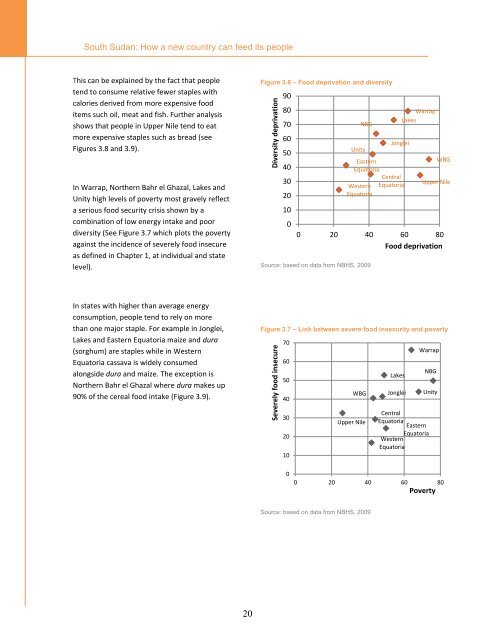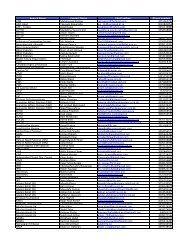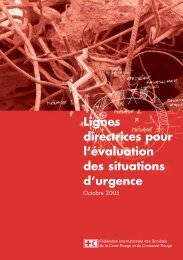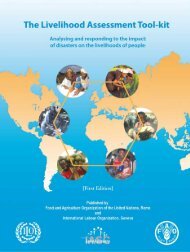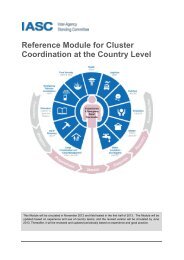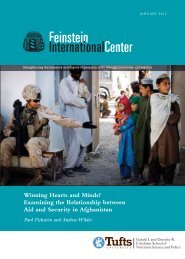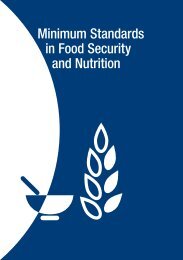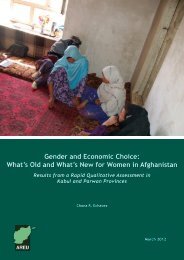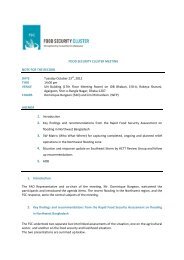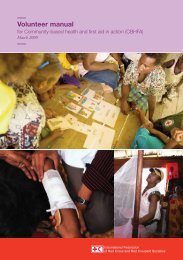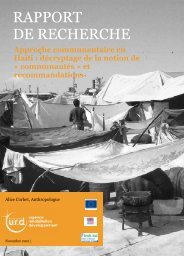4.15 MB - Food Security Clusters
4.15 MB - Food Security Clusters
4.15 MB - Food Security Clusters
- No tags were found...
You also want an ePaper? Increase the reach of your titles
YUMPU automatically turns print PDFs into web optimized ePapers that Google loves.
Severely food insecureDiversity deprivationSouth Sudan: How a new country can feed its peopleThis can be explained by the fact that peopletend to consume relative fewer staples withcalories derived from more expensive fooditems such oil, meat and fish. Further analysisshows that people in Upper Nile tend to eatmore expensive staples such as bread (seeFigures 3.8 and 3.9).In Warrap, Northern Bahr el Ghazal, Lakes andUnity high levels of poverty most gravely reflecta serious food security crisis shown by acombination of low energy intake and poordiversity (See Figure 3.7 which plots the povertyagainst the incidence of severely food insecureas defined in Chapter 1, at individual and statelevel).Figure 3.6 – <strong>Food</strong> deprivation and diversity9080706050403020100UnityNBGEasternEquatoriaWesternEquatoriaSource: based on data from NBHS, 2009WarrapLakesJongleiCentralEquatoriaWBGUpper Nile0 20 40 60 80<strong>Food</strong> deprivationIn states with higher than average energyconsumption, people tend to rely on morethan one major staple. For example in Jonglei,Lakes and Eastern Equatoria maize and dura(sorghum) are staples while in WesternEquatoria cassava is widely consumedalongside dura and maize. The exception isNorthern Bahr el Ghazal where dura makes up90% of the cereal food intake (Figure 3.9).Figure 3.7 – Link between severe food insecurity and poverty70Warrap60NBGLakes50WBG Jonglei Unity40302010Upper NileCentralEquatoria EasternEquatoriaWesternEquatoria00 20 40 60 80PovertySource: based on data from NBHS, 200920


